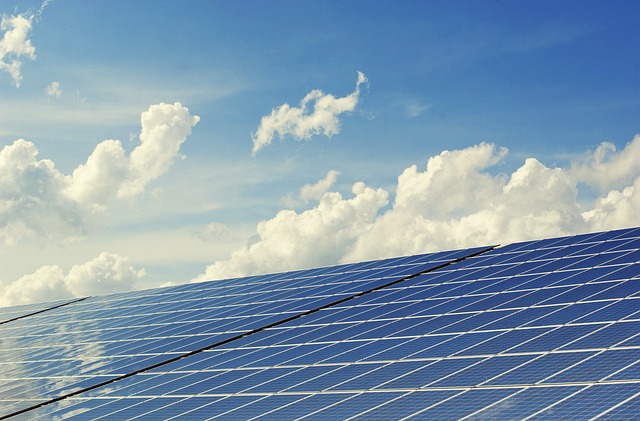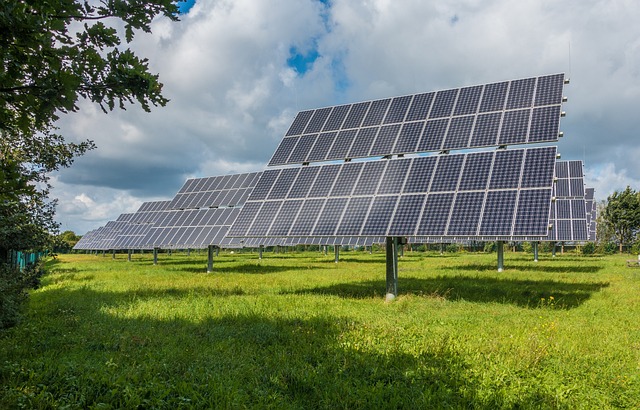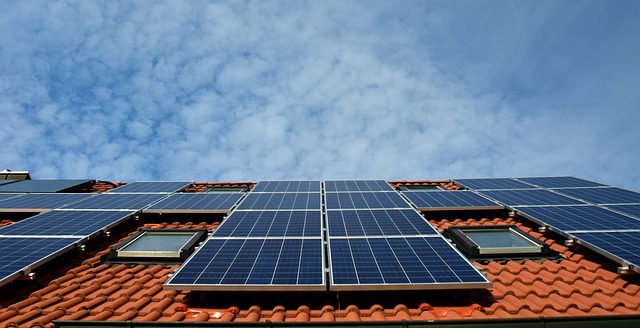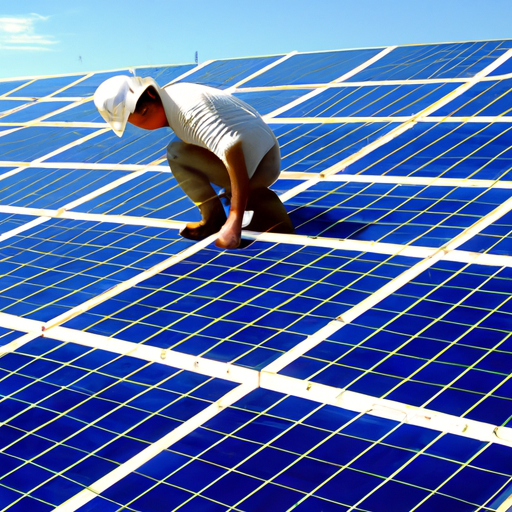Have you ever wondered if a DIY solar installation is as effective as a professional installation? Well, look no further because we have all the answers for you in this article. At HomeSolarDIY, we understand that taking control of your energy future is a big decision, and we are here to help you every step of the way.
In this article, we will delve into the pros and cons of a DIY solar installation versus a professional installation. We’ll discuss the benefits of DIY, such as cost savings and the satisfaction of building your own system. But we’ll also address the potential challenges and risks involved in going the DIY route. Whether you’re a seasoned DIY enthusiast or just starting out, our comprehensive guide will provide you with the information you need to make an informed decision.
So, if you’re ready to learn more about DIY solar installation and its effectiveness compared to professional installations, keep reading. We have all the resources and support you need to make your solar dreams a reality.

This image is property of pixabay.com.
Introduction
As the world becomes more environmentally conscious, many homeowners are considering solar power as an alternative energy source. With the option of do-it-yourself (DIY) solar installation, it is natural to wonder if it is as effective as professional installations. In this article, we will explore the benefits and challenges of DIY solar installation, compare it to professional installations, and provide success stories and considerations for those interested in taking the DIY route.
Understanding Solar Power
The basics of solar power
Solar power is the conversion of sunlight into electricity, using solar panels. It is a renewable and sustainable energy source that reduces reliance on fossil fuels. The basic principle behind solar power lies in the photovoltaic effect, where photons from sunlight knock electrons loose from their atoms, generating an electric current.
How solar panels work
Solar panels, made up of individual solar cells, capture the sun’s energy and convert it into electricity. The solar cells are typically made of silicon, a semiconductor material. When sunlight strikes the solar cells, it creates an electric field that allows photons to free electrons from atoms, generating a flow of electricity.
Types of solar power systems
There are primarily two types of solar power systems: grid-tied and off-grid systems. Grid-tied systems are connected to the utility grid and allow homeowners to sell excess electricity back to the grid. Off-grid systems store excess electricity in batteries for use when sunlight is not available, providing energy independence.

This image is property of pixabay.com.
Benefits of DIY Solar Installation
Cost savings
One of the primary benefits of DIY solar installation is the potential for significant cost savings. By eliminating labor costs associated with professional installations, homeowners can save thousands of dollars. Additionally, sourcing and purchasing materials directly can often result in lower overall costs.
Flexibility and customization
DIY solar installation offers homeowners the flexibility to design and customize their solar power systems according to their individual needs and preferences. This level of control allows for a tailored solution that maximizes energy efficiency and output.
Learning experience and skill development
Embarking on a DIY solar installation journey provides an opportunity for homeowners to learn about solar power and develop new skills. From understanding the intricacies of solar panels to navigating electrical connections, the learning experience can be incredibly rewarding and empowering.
Challenges of DIY Solar Installation
Technical knowledge and expertise
One of the main challenges of DIY solar installation is the requirement for technical knowledge and expertise. Although there are numerous resources available, it is essential to have a solid understanding of electrical systems, safety protocols, and local regulations. Lack of knowledge in these areas can lead to subpar installations and potential safety hazards.
Safety considerations
Working with electricity and rooftops poses inherent risks, making safety a top priority in DIY solar installation. Homeowners must ensure proper safety precautions are taken, including wearing protective gear, following safety guidelines, and conducting thorough research before starting the project.
Permits and regulations
DIY solar installations often require permits and compliance with local regulations. Homeowners must familiarize themselves with the permitting process, electrical codes, and building regulations in their area. Failure to obtain necessary permits can result in fines, delays, and even having to dismantle the installation.

This image is property of pixabay.com.
Professional Solar Installations
Why choose professional installations
Professional solar installations offer several advantages over DIY installations. Certified installers have the expertise and experience to design and install solar power systems efficiently and effectively. They have a deep understanding of local regulations and ensure compliance, taking the burden off homeowners.
Expertise and experience
Professional installers undergo extensive training and certification to ensure they possess the necessary expertise and experience in solar power installations. This knowledge allows them to optimize system performance, address any technical challenges, and provide valuable post-installation support.
Warranty and support
Choosing a professional installation often comes with the added benefit of warranties and ongoing support. Reputable solar companies offer warranties on both equipment and installation, ensuring that any issues or malfunctions are promptly addressed and resolved.
Comparing DIY and Professional Installations
Installation quality
While a well-executed DIY installation can be of high quality, professional installations usually offer increased reliability and consistency. Certified installers follow industry best practices and undergo rigorous quality checks, resulting in a professionally installed and reliable system.
System performance and efficiency
Professional installers have the experience and knowledge to optimize system performance, ensuring maximum energy production and efficiency. They assess factors such as sun exposure, shading, and panel orientation, making informed decisions to maximize the solar array’s potential.
Long-term reliability
Professional installations often come with extended warranties and ongoing support, offering peace of mind to homeowners. The expertise and experience of professional installers reduce the likelihood of system failures and ensure long-term reliability.

Success Stories of DIY Solar Installations
Case studies of successfully installed DIY solar systems
There are numerous success stories of homeowners who have successfully installed their own solar power systems. These individuals have taken the time to educate themselves, carefully plan their installations, and execute them with precision. They have achieved energy independence and significant cost savings.
Benefits experienced by DIYers
DIY solar installations have provided homeowners with a sense of accomplishment, empowerment, and energy independence. Many individuals have reported lower energy bills, reduced reliance on the grid, and a positive impact on the environment. DIYers have also joined a thriving community that shares knowledge, experiences, and solutions.
Considerations for DIY Solar Installation
Assessing your energy needs
Before embarking on a DIY solar installation, it is crucial to assess your energy needs. Understanding your current and future energy requirements will help you determine the appropriate size and capacity of your solar power system.
Calculating solar system size
Calculating the size of your solar system involves evaluating your average energy consumption, considering factors such as the number of occupants, appliances, and electronics in your household. Online calculators and energy audits can assist in determining the optimal system size.
Choosing the right components
Selecting the right solar panels, inverters, batteries (if applicable), and other system components is critical for optimal performance and long-term reliability. Conduct thorough research, consider factors such as efficiency, warranty, and compatibility, and consult with industry experts if needed.

Step-by-Step Guide to DIY Solar Installation
Site evaluation and sun exposure analysis
Before installation, conduct a thorough site evaluation to assess the suitability of your property for solar panels. Analyze sun exposure, shading, and obstacles that may affect the solar array’s performance.
Designing your solar array
Based on your energy needs and site evaluation, design your solar array. Determine the number of panels, their placement, and the optimal tilt and orientation for maximum sun exposure.
Procuring materials and tools
Source the necessary materials and tools for your installation. This includes solar panels, inverters, racking systems, wiring, and connectors. Ensure you purchase high-quality components that meet industry standards.
Installing solar panels and inverters
Follow manufacturer guidelines and best practices to install your solar panels and inverters. This may involve mounting panels on the roof or using ground-mounted systems. Ensure proper electrical connections and grounding for maximum safety.
Wiring and connection
Connect your solar panels and inverters to the electrical panel or battery storage system. Properly size and install the necessary wiring and connectors. Adhere to electrical codes and safety standards.
Testing and troubleshooting
Once your system is installed, perform thorough testing to ensure all components are functioning correctly. Troubleshoot any issues that may arise, referring to manufacturer instructions or seeking expert advice if necessary.
Conclusion
DIY solar installation can be a viable and effective option for homeowners interested in harnessing the power of the sun. While it requires technical knowledge, careful planning, and adherence to safety protocols, the benefits of cost savings, customization, and learning experiences are undeniable. However, professional installations offer expertise, warranties, and long-term support that DIY projects may lack. Ultimately, the effectiveness of DIY solar installation depends on individual circumstances, goals, and commitment. With HomeSolarDIY as your guide, you can embark on a solar journey that suits your needs and contributes to a sustainable future.

